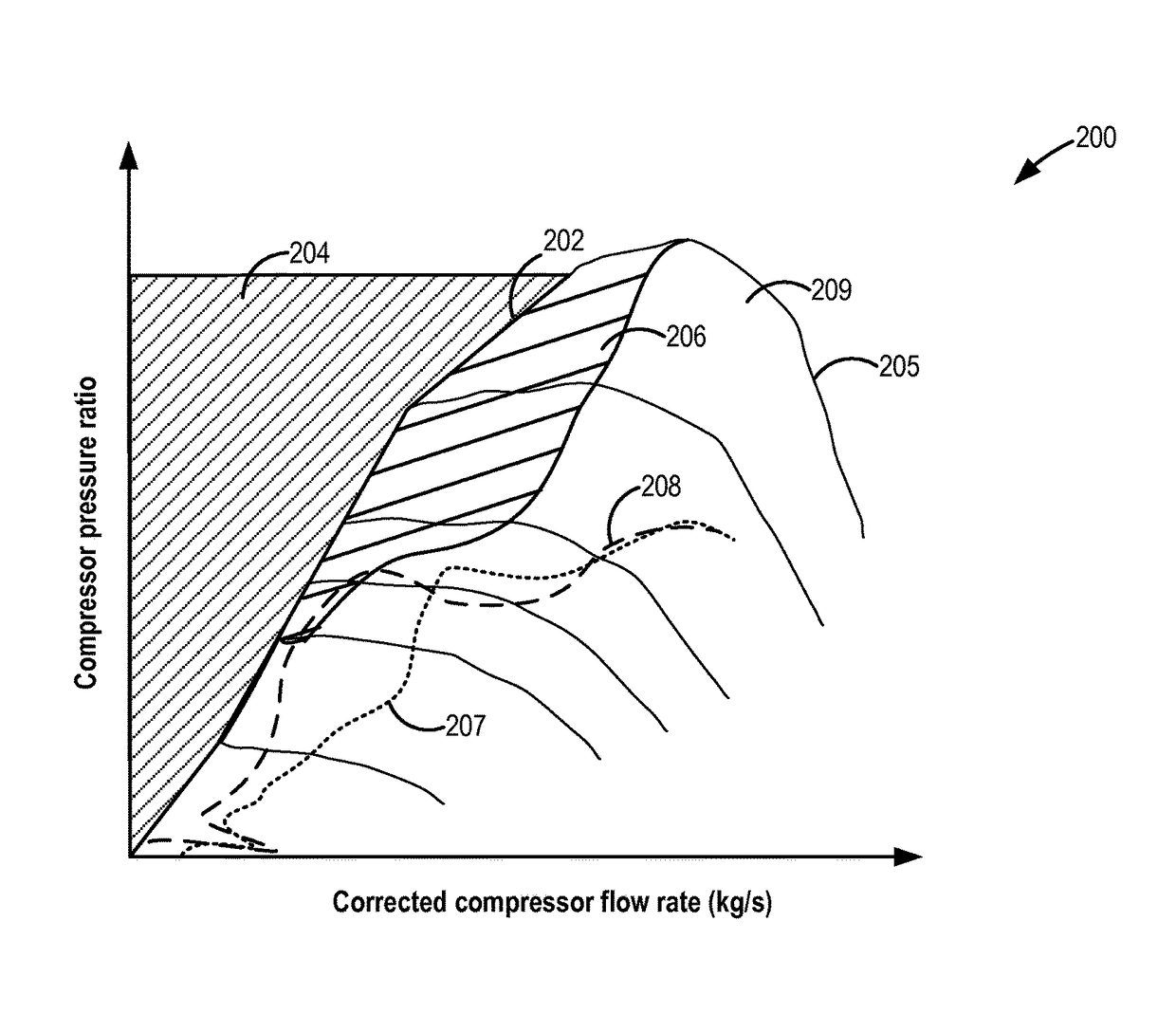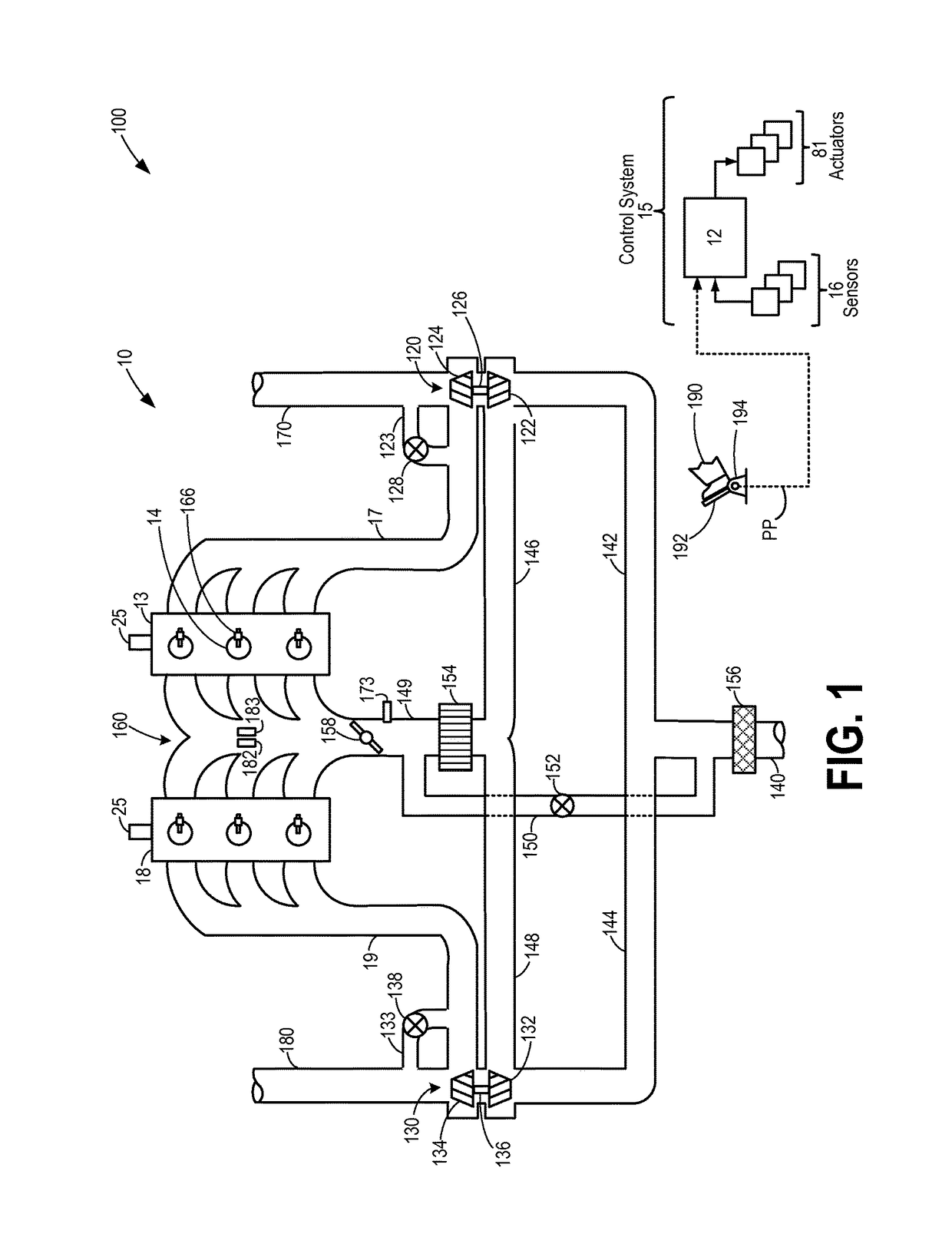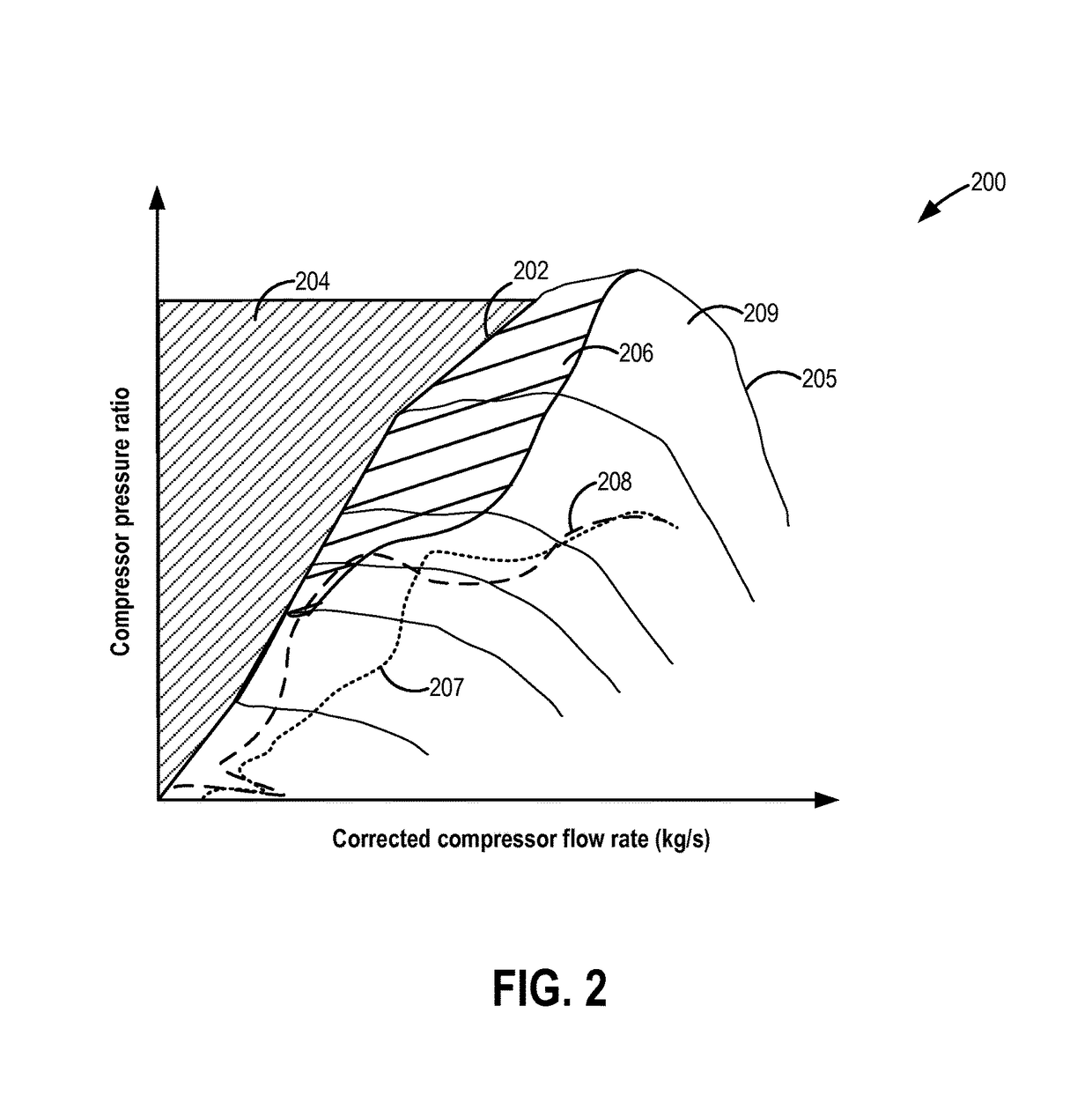Methods and systems for surge control
a surge control and surge technology, applied in mechanical control, electric control, combustion engines, etc., can solve problems such as potential surge, reduced forward flow through compressors, and prone to surge, and achieve the effect of improving consumer satisfaction
- Summary
- Abstract
- Description
- Claims
- Application Information
AI Technical Summary
Benefits of technology
Problems solved by technology
Method used
Image
Examples
Embodiment Construction
[0021]The following description relates to systems and methods for calibrating a surge line of a compressor map (such as the map shown in FIG. 2) for a compressor included in a boosted engine system, such as the system of FIG. 1. For example, drivability may be reduced when the surge line is calibrated aggressively to avoid compressor operation in soft surge regions for noise vibration and harshness (NVH) reduction as illustrated in FIGS. 3-4B. In order to obtain a balanced tradeoff between drivability and NVH mitigation, a controller may be configured to perform a control routine, such as the routines of FIGS. 6A-7 to adjust calibration of the surge line based on vehicle speed and / or engine speed in addition to compressor pressure ratio. Further, the controller may adjust the calibration according to the method of FIGS. 5A-5C to determine a final surge line of the compressor based on vehicle speed and / or engine speed. Example calibration of surge line based on vehicle and / or engine...
PUM
 Login to View More
Login to View More Abstract
Description
Claims
Application Information
 Login to View More
Login to View More - R&D
- Intellectual Property
- Life Sciences
- Materials
- Tech Scout
- Unparalleled Data Quality
- Higher Quality Content
- 60% Fewer Hallucinations
Browse by: Latest US Patents, China's latest patents, Technical Efficacy Thesaurus, Application Domain, Technology Topic, Popular Technical Reports.
© 2025 PatSnap. All rights reserved.Legal|Privacy policy|Modern Slavery Act Transparency Statement|Sitemap|About US| Contact US: help@patsnap.com



